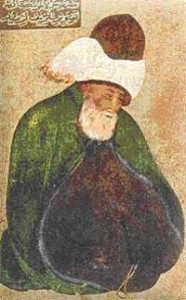
Guru, him say: Any two lovers know the power of gazing into each others’ eyes. It carries one deeply inside and creates a harmonious whole which is bigger than either of the pair; a oneness identification; a union. It can be erotically thrilling at times but more typically it goes beyond body thrill into the realms of delight and surrender.
In Transformational PsychologyTM, we use “eye gazing” to enhance perceptions and connectivity with others. It is absolutely vital (and little practiced in most psychotherapies, I observe) that you process the person in front of you, not some imagined trial case. You can’t do that without actually looking at the person in front of you.
So often the practitioner is trying to force the client to fit their preconceived notions, he or she fails to observe the individual in front of them. Often the practitioner has only a narrow range of skills and wants the client to align with these—or has some crank pet theory—so he or she pretends the case fits into these prejudices and misses the real signals from the client. How else could mischief like false memory syndrome get started?
But there is much more to eye gazing than just learning the skill of quiet contemplative listening; it can lead us to see the soul of another and, as if by magic, our own soul too. In fact eye gazing can take us to extraordinary mind spaces and I highly commend it as an exercise, leading to better communication skills and deeper insights.
History Of Eye Gazing?
It’s a practice which has a long and honorable tradition. Will Rogers in his book The Spiritual Practices of Rumi (originally titled Rumi: Gazing At The Beloved) gives us a few examples:
Darshan is a Hindu concept. It comes from a Sanskrit word meaning “Seeing and being seen by God”. Well, most traditions declare we are made in the image of God, so why not? If you look deep into another’s soul or Being, you should be able to see God there. And by the way, what you see is just a reflection of yourself too…
It may have a formal setting, where the Master or Teacher sits in front of the class and encourages them to share darshan with him. He pours out his gaze; students return it and learn the mysteries of God. Ramana Maharshi, a great twentieth century teacher and one of the great givers of darshan, said “When the eyes of the student meet the gaze of the teacher, words of instruction are no longer necessary.”
It can be further said that something takes place between the two, which almost defies words. Love, in my experience, is a word that doesn’t really cover it. Or if it does, than normal measures of love are seriously lacking.
According to Johnson, the Cowichan Indian tribe of Vancouver Island have a concept of “disease of the eye”. This refers to the tendency to pass another human and averting one’s gaze as one does so. To them, it’s a kind of affront of God, to deny or try to sidestep another’s presence or Being.
Well, there’s a lot of eye disease on the streets of modern cities. Maybe that’s part of the problem of urban craziness?
Oscar Ichazo, the Chilean shaman, has developed a practice called traspasso, in which students sit across from each other and hold each other’s gaze. It means, roughly, giving up oneself.
The late Charlotte Joko Beck (1917-2011), modern US Zen teacher, author and founder of the Ordinary Mind Zen School, included eye gazing in the meditation routines she taught. For her it was a pathway to the intense here and now, no clutter, just being “here”.
The willingness to accept and hold another’s gaze, without being uncomfortable or confrontational, is something of a skill. It is, in a sense, a measure of our spiritual maturity.
Rumi’s True Love
Jalaluddin Rumi is one of the most read poets of our age and one of the most admired love poets of all time, along with Ovid, Sappho, John Dunne and, perhaps, Elizabeth Barrett Browning.
It comes as a surprise to many of his devotees, that Rumi’s love poems were entirely directed towards a man called Shams of Tabriz. Continue reading


